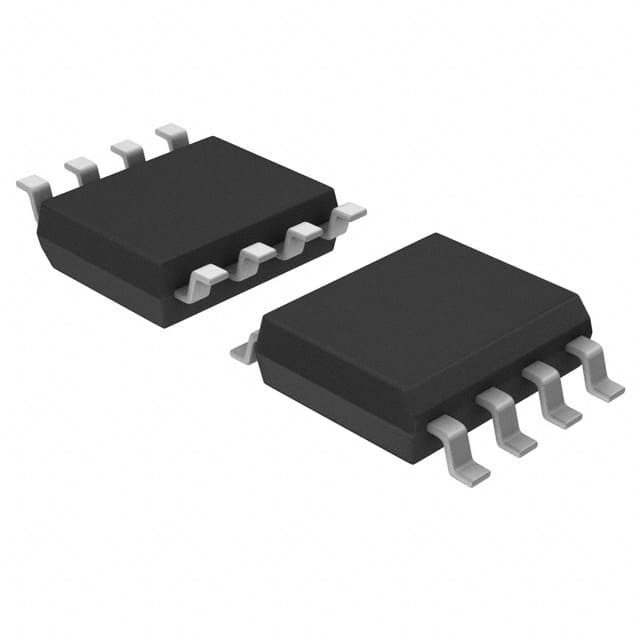MC100EP140DR2G
Overview
- Category: Integrated Circuit
- Use: Signal Processing
- Characteristics: High-speed, Low-power
- Package: SOIC-8
- Essence: Differential Receiver
- Packaging/Quantity: Tape & Reel, 2500 units per reel
Specifications and Parameters
- Supply Voltage Range: -4.2V to -5.7V
- Input Voltage Range: -3.0V to -5.7V
- Output Voltage Range: -3.0V to -5.7V
- Operating Temperature Range: -40°C to +85°C
- Maximum Input Clock Frequency: 3GHz
- Propagation Delay: 300ps (typical)
Pin Configuration
- VCC
- Qn
- Qp
- GND
- D
- CLK
- /CLK
- VEE
Functional Characteristics
The MC100EP140DR2G is a differential receiver designed for high-speed signal processing applications. It operates with a supply voltage range of -4.2V to -5.7V and can handle input signals in the range of -3.0V to -5.7V. The device provides two complementary outputs, Qp and Qn, which are driven by a differential input signal (D) and clock input (CLK). The receiver has a maximum input clock frequency of 3GHz and offers a propagation delay of 300ps (typical).
Advantages and Disadvantages
Advantages: - High-speed operation - Low power consumption - Wide operating temperature range - Small package size
Disadvantages: - Requires negative supply voltage - Limited input voltage range
Applicable Range of Products
The MC100EP140DR2G is suitable for various signal processing applications that require high-speed and low-power operation. It can be used in communication systems, data transmission equipment, digital signal processing, and other similar applications.
Working Principles
The MC100EP140DR2G operates based on differential signaling principles. The differential input signal (D) is compared with the clock input (CLK), and the complementary outputs (Qp and Qn) are generated based on the input voltage levels. The receiver amplifies and converts the differential input signal into a single-ended output signal.
Detailed Application Field Plans
- Communication Systems: The MC100EP140DR2G can be used in high-speed communication systems to receive and process differential signals, ensuring accurate data transmission.
- Data Transmission Equipment: It is suitable for use in data transmission equipment such as routers, switches, and network interfaces, where high-speed signal processing is required.
- Digital Signal Processing: The receiver can be utilized in digital signal processing applications, including audio/video processing, image recognition, and real-time data analysis.
- Test and Measurement Instruments: It finds application in test and measurement instruments that require high-speed signal acquisition and processing capabilities.
- Industrial Automation: The MC100EP140DR2G can be employed in industrial automation systems for precise control and monitoring of high-speed signals.
Detailed Alternative Models
- MC100EP140DG: Similar to MC100EP140DR2G but available in a different package (TSSOP-8).
- MC100EP140DTG: Another alternative with a different package (TQFP-32) and extended temperature range (-55°C to +125°C).
- MC100EP140MNG: A surface-mount alternative with a smaller package size (QFN-16).
5 Common Technical Questions and Answers
Q: What is the maximum operating frequency of the MC100EP140DR2G? A: The maximum input clock frequency is 3GHz.
Q: Can the MC100EP140DR2G operate with a positive supply voltage? A: No, it requires a negative supply voltage in the range of -4.2V to -5.7V.
Q: What is the typical propagation delay of the MC100EP140DR2G? A: The typical propagation delay is 300ps.
Q: What is the input voltage range of the MC100EP140DR2G? A: The device can handle input signals in the range of -3.0V to -5.7V.
Q: What are the advantages of using the MC100EP140DR2G? A: The advantages include high-speed operation, low power consumption, wide operating temperature range, and small package size.
This encyclopedia entry provides an overview of the MC100EP140DR2G, including its basic information, specifications, pin configuration, functional characteristics, advantages and disadvantages, applicable range of products, working principles, detailed application field plans, alternative models, and common technical


